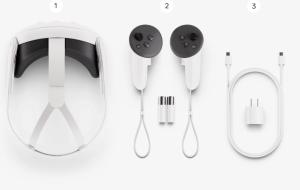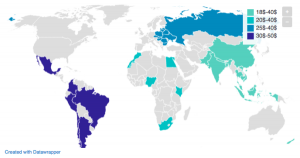Obtaining valuable, future-proof backlinks requires human interaction — and that means being prepared to offer something of value. Columnist Andrew Dennis shares his advice for putting together a successful link building outreach campaign.

Securing real links requires outreach.
No matter the site, industry or audience, the only way to earn worthwhile links is through some form of human-to-human communication.
Google is continuously improving its ability to detect spammy tactics, reducing the efficacy of manipulation and increasing the power of editorially given links. As Jon Cooper pointed out in a SearchFest session earlier this year, future-safe links must come from one-on-one outreach.
Outreach can make or break a link campaign. Fortunately, effective outreach only requires two simple ingredients: preparation and persuasion.
Every successful link acquisition project is fueled by well-researched, well-positioned outreach, which is, therefore, compelling.
Convincing outreach starts with research
Audience research is the foundation of effective outreach, because proper research empowers you to communicate persuasively. Preparation positions you for success and you execute through compelling messaging.
There are a number of excellent outreach resources within the SEO space, and many of them provide tips and guidance on how to craft an effective email. Writing compelling emails is important, but too many people get wrapped up in crafting messages and subject lines and forget how much of the work happens before an email is ever sent.
Clever writing can only do so much, and it will never be enough to overcome a lack of true value. Persuasive messaging is vital to any outreach campaign, but persuasion cannot replace preparation.
In fact, researching and preparing ahead of time makes matters easier and simpler (not to mention increases your chances for success) when you start contacting bloggers, journalists and site owners.
There are three main elements you must thoroughly understand before you start an outreach campaign:
- The value to your audience.
- The website you’re contacting.
- The person and their motivation.
Understanding these three elements will be instrumental in determining who you contact, how you define your value, how to position your messaging and the overall success of your outreach campaign.
Defining value
The first step in preparing link building outreach is recognizing your value — specifically the value you offer to link prospects.
You need to ask yourself, “Why would someone link to my page?” The answer should be simple — because it benefits them and/or their audience. Outreach then becomes merely explaining why it’s in their best interest to link, pointing to the value you have defined.
Recognizing the significance of your offer starts with understanding your value from the perspective of your audience. Link building and SEO must be integrated into other marketing in order to take full advantage of all assets available. As link building maven Julie Joyce said here on Search Engine Land:
Link building works best when you’re considering the whole marketing presence of a site, not just a part of it.
Through consistent communication, you can stay abreast of any new products or marketing initiatives that could be used as valuable assets for link outreach. However, awareness is only part of recognizing what you can offer; you must also have a firm understanding of why it is valuable. If you don’t fully understand how a link to your site would benefit prospective sites, you’ll never be able to communicate that value and convince someone to link to you.
Regardless of the form your offer takes (e.g., product, service, content, research data), you must recognize the value it provides to others. When you recognize the inherent usefulness in what you’re pitching, outreach becomes easier; it’s less about tips and tricks and more about highlighting value.
Understanding the tone, core values and USP of your brand (or the brand you’re representing) will get you part of the way there, but to truly appreciate the value of your asset, you need to put yourself in the shoes of those who find it valuable or useful. Similar to building out buyer personas, you need to identify where your audience lives on the web. These sites and communities make ideal link prospects.
Create a general profile for your model audience based on:
- pain points;
- demographics;
- beliefs/values;
- behavioral trends;
- and more.
You can use this profile to start locating potential sites and communities where this audience exists online.
Once you’ve defined value, being persuasive becomes easy. Simply explain how your asset has inherent value to a specific audience — their audience.
Understand the websites you’re targeting
With a firm grasp of the value you offer, it’s time to start analyzing potential link prospects.
These prospects are the sites that have audiences that will appreciate the value you offer. It should actually be in the site’s best interest (or the best interest of their audience) to link.
As with most aspects of link acquisition, relevance is a driving force in finding the appropriate websites.
Ensuring the site has a relevant audience that will benefit from exposure to your link (site, resource or content) is requisite, but you can dig even deeper to better position yourself for successful outreach. Ask yourself some questions:
- Why does this site exist?
- Which audience does this site serve?
- How does this site make money (affiliate, ad revenue, products or services)?
- What types of relationships exist with other sites?
- How does this site serve its audience (blog posts, videos, podcasts and so on)?
While you’re researching the site, make sure there aren’t any other resources/pages fulfilling the purpose you’re pitching. If you do find any tangentially related pages, know (and communicate) how your own offer differentiates. Make sure you know the name of the page (or be able to describe it clearly) and exact location where you think your link offers the most value.
You need to make sure you’re targeting sites that will genuinely benefit from linking to you. Outreach becomes easy when the value of your link is obvious.
You can increase your chances for success further by doing more research into the “why” behind the site, making it easier to speak to why a link to your site would benefit their site and audience.
Appreciate the person you’re contacting
Editorial links — the types of links you should want — by very definition have to be created by another human being, a person who exercises scrutiny.
Knowing a site’s audience and their interests will help you speak to the value of your link, but you also need to understand the actual human being you’re emailing. This is the person who will ultimately decide if your link goes up — and even if you offer clear value, failure to connect with this person on human level means that you may fail to secure a link.
The first thing you should do to help foster a human connection is make sure you’re contacting the appropriate person. Ideally (and typically, with a little digging), you will be able to find the person who is responsible for managing the specific portion of the website where you want a link.
Finding the most appropriate person to contact will reduce the number of barriers to your link and avoid wasting everyone’s time. You don’t want to contact someone who has to then redirect you to the actual person responsible for managing links, unnecessarily bogging down your outreach process. Perform due diligence prior to outreach to ensure you’re emailing the right person for your request.
Once you know you have the right person, you should take some time to get know that person and interact with them. Learn about why that person is active on (or maintains) their site, gain an appreciation for their passions, personal motivations, beliefs and so forth.
Some simple ways to connect with potential link partners include:
- following and engaging (like, share, ask questions) with them on social media;
- commenting on their site and/or blog posts;
- interacting on their favorite forums or communities;
- offering helpful feedback (e.g., informing them of broken links, reporting dead or broken pages, noting formatting issues) regarding their site; and
- subscribing to their newsletter.
Establishing a relationship prior to requesting a link will improve your chances for success, and building positive connections around your industry also offers branding benefits and leads to further marketing opportunities.
When you understand why someone cares about their site, you can speak to what motivates them and communicate value from their perspective.
All this preliminary research primes your outreach for success. You should be able to definitively say why it’s within the best interest of the site, their audience and the person who maintains the site to link. That’s a long way down the path of persuasive communication.
TL;DR
Being persuasive means making your outreach more about the person you’re contacting (and their site/audience) and less about you (and your link).
You must speak to three different levels of value:
- The value for the audience of the site you approach.
- The value for the site, as well as their audience.
- The value for the actual person you’re contacting, in addition to the site and their audience.
If you’ve done the necessary research on each level, you can keep your message succinct and simple (while still communicating persuasively) – present your asset and explain why a link to it is beneficial to everyone involved.
If one of those is missing, you may not secure a link. If all three are in place, there should be no feasible reason for them to decide against linking to you.
[Article on Search Engine Land.]
Some opinions expressed in this article may be those of a guest author and not necessarily Marketing Land. Staff authors are listed here.
Marketing Land – Internet Marketing News, Strategies & Tips
(98)








